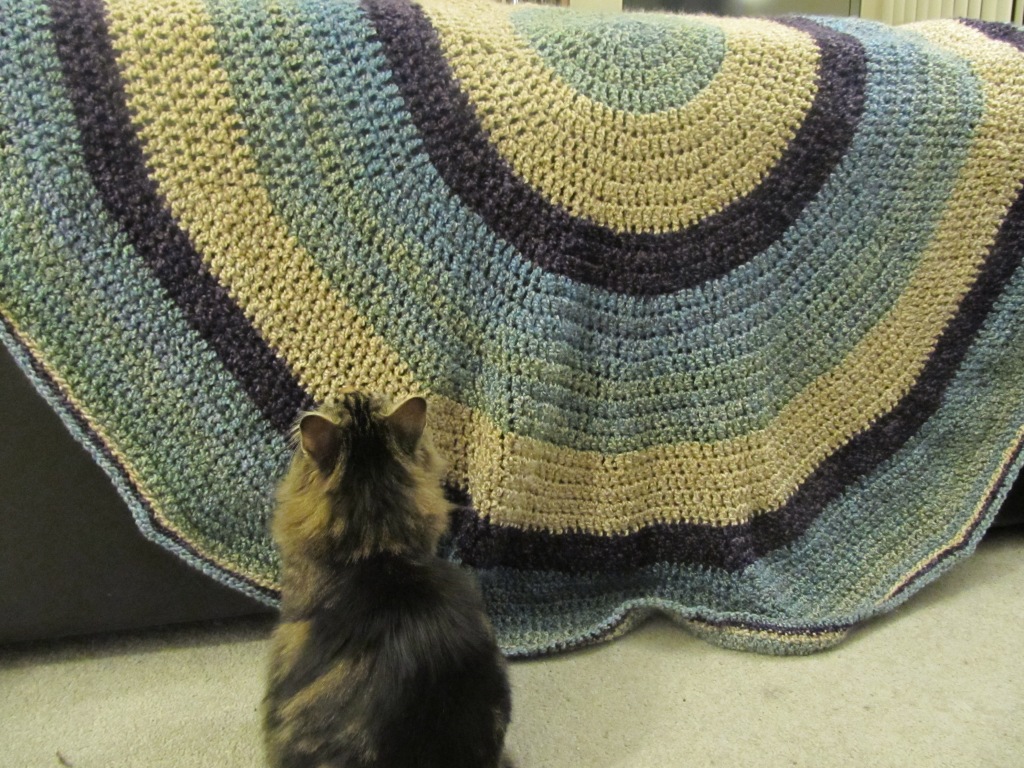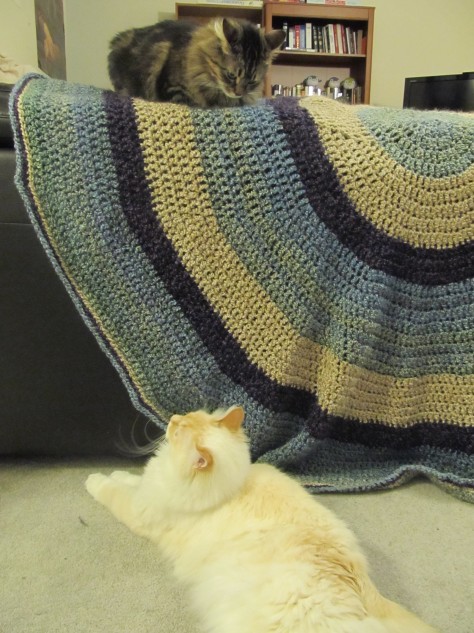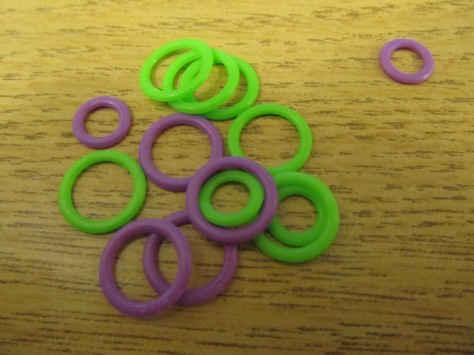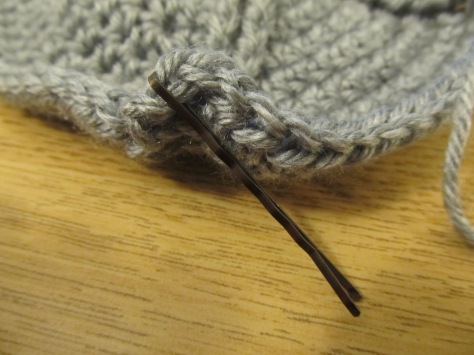I had a request to make ferret-style coffee cozies. Since I couldn’t find an existing pattern, I used my regular coffee cozy pattern and added some basic shapes. They came out looking a bit like mice, but that’s better than looking like bears (which is what the first attempts mostly resembled). After a lot of experimenting, this is how they turned out…

Here’s the pattern in US terms:
Materials
Worsted weight cotton* yarn in 3 colours:
A: Main colour
B: White
C: Accent colour (darker than A)
*Note: I recommend using cotton because it won’t shrink or felt when washed, and it won’t melt when heated like acrylic does. You can also use wool but isn’t as easy to wash. The cozies that I’ve made with cotton yarn can go into the washing machine no problem. They’re also technically drier safe too but mine have faded when I’ve dried them so I’d recommend air-drying.
Crochet hooks F, G, H, & I
2 black buttons (for eyes) + 1 pink button (for the nose)
Very small amount of polyester fiberfill (for nose)
Pattern
Cup Cozy
Note: This pattern can be worked in continuous rounds OR with a slip stitch and chain 1 @ the end of each round. I prefer to slip stitch at the end of each row so the colours line up evenly.
With H hook & colour A, ch 25. Join with sl st (don’t twist chain)
With I hook:
Rd 1-3: Sc in each st around (25sts)
Rd 4: Sc in 1st st, [2sc in next, 1sc in each of next 11 sts] twice. (27sts)
Rd 5-6: Sc in each st around (27sts)
Rd 7: Sc in 1st st, [2sc in next, 1sc in each of next 12 sts] twice. (29sts)
Rd 8: Sc in each st around (29sts). Colour change to B (white yarn)
Rd 9: Sc in each st around (29sts)
Rd 10: Sc in 1st st, [2sc in next, 1sc in each of next 13 sts] twice. (31sts)
Rd 11-12: Sc in each st around (31sts)
Rd 13: Sc in 1st st, [2sc in next, 1sc in each of next 14 sts] twice. (33sts)
Rd 14: Sc in each st around (33sts). Finish off. Sew ends in.
Mask
To make the mask, you’re going to crochet an oval. Again, this can be worked in continuous rounds or can be joined at the end of each round. I prefer to join.
With F hook & yarn C (accent colour, Ch 7
Switch to G hook
Rd 1: Sc in 2nd st from hook and in next 4 sts. Sc 3 in the last st. Rotate your piece so you’re now working in the other side of the chain. Sc in the next 4 sts. Sc 2 in the last. Join to 1st sc (14 sts)
Rd 2: Ch 1, 2sc in 1st st, sc in next 4, 2sc in each of the next 3 (i.e. 6 sts), sc in next 4, 2sc in each of the next 2. Join to the 1st sc. (16sts)
i.e. inc, 4 singles, [inc]x3, 4 singles, [inc]x2
Rd 3: Ch 1, 2 sc in 1st st, sc in next 5, [2sc, 1sc] x3, sc in next 4, [2sc, 1sc] x2. Join to 1st sc. (22sts)
i.e. [inc, 1] 4 singles, [inc, 1] x3, 4 singles, [inc, 1] x2
Rd 4: Ch 1, 2 sc in 1st st, sc in next 6, [2sc, 1sc in next 2] x3, sc in next 4, [2sc, 1sc in next 2] x2. Join to 1st sc. (28sts)
i.e. [inc, 1,1] 4 singles, [inc, 1,1] x3, 4 singles, [inc, 1,1] x2
Rd 5: Ch 1, 2 sc in 1st st, sc in next 7, [2sc, 1sc in next 3] x3, sc in next 4, [2sc, 1sc in next 3] x2. Join to 1st sc. (34sts) Finish off leaving a tail for sewing.
i.e. [inc, 1,1,1] 4 singles, [inc, 1,1,1] x3, 4 singles, [inc, 1,1,1] x2
Nose
Work the nose in continuous rounds.
With I hook and yarn B (white)
Sc 4 into a magic circle
Rd 1: 2sc in each st (8sts)
Rd 2: Sc around (8sts)
Rd 3: [2sc, 1sc in next] around (12sts)
Rd 4: Sc around (12sts)
Rd 5: [2sc, 1 sc in next 2] around (16sts)
Rd 6: Sc around (16sts). Finish off leaving a tail for sewing.
With embroidery floss, sew pink nose onto the end. I used a small pink button for the nose, but you could easily embroider a little triangular nose on too.
You can also try adding a mouth 🙂
Ears (make 2)
With F hook and yarn B (white)
Row 1: Ch 2, 3 sc in 2nd ch from hook. Ch 1 & turn.
Row 2: 2sc in each st (6sts). Ch 1 & turn.
Row 3: [1sc, 2sc in next] across (9sts). Ch 1 & turn.
Row 4: [1sc in first 2 sts, 2sc in next] across (12 sts. Ch 1 & turn. Finish off leaving a tail for sewing.
Assembly

First, sew mask onto cup cozy. Position it so the top of the oval lays across the 2nd to last row of the cozy.
Next, sew on the nose. It should lay almost entirely on top of the mask, but make sure there’s no mask peeking out through the bottom. When there is only a small opening left, add fiberfill and finish sewing to the cozy.
Now sew on the eyes and ears. The base of the ear should follow the curve of the mask without touching the mask.
Enjoy!























